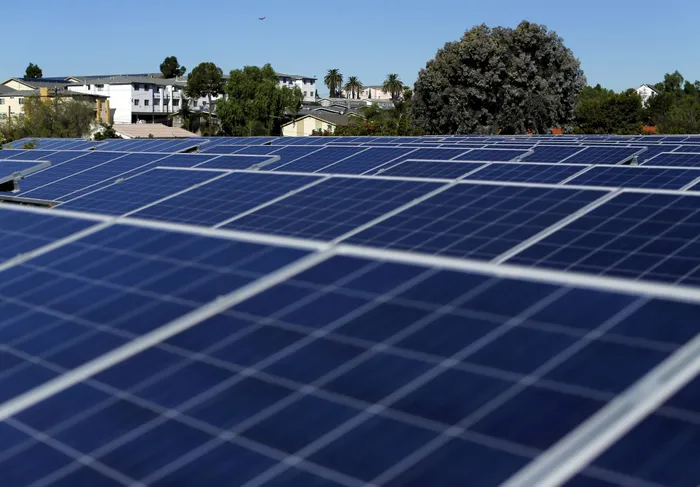Load shedding: Power houses in the suburbs as plans are being put in place for solar-powered feed-in schemes

If all goes to plan, homes will become the new power plants in South Africa. Picture: REUTERS
Johannesburg - Soon, if all goes to plan, homes will become mini power stations and their owners energy brokers peddling electricity not only to Eskom, but maybe to their neighbours too.
In the past week the City of Cape Town announced that residents and companies would soon be able to sell electricity to the municipality in what is referred to as a reverse feed-in programme.
It has been seen as the latest initiative in the battle against load shedding, and the City of Cape Town plans to have the initiative up and running soon.
Cape Town Mayor Geordin Hill-Lewis this week said that the city could start paying commercial customers before June and residents later in the year.
In a statement, the city said the National Energy Regulator of South Africa had approved a rate of 78.98c/kWh for the financial year for Cape Town to pay those wanting to sell electricity. The city had also added a 25c/kWh incentive tariff to this.
For some Capetonians it will mean cash in their pockets, but it will first mean a large capital outlay.
“The typical middle income house uses around 30 kilowatt hours per day. If that house wanted to make basically the same quantity of electricity from a solar plant, they would probably have to install about a seven-kilowatt PV system and the outlay for that would be about R100 000,” said South African Photovoltaic Industry Association spokesperson Frank Spencer.
Then there is the two-way meter that would need to be installed, which Spencer believes will cost between R10 000 and R15 000.
“Where the market is also innovative is that there are lots of financing products for solar plants, like numerous banks that will allow you to borrow the money from your bond. The repayment on your bond would be less than what you would save on electricity,” explains Spencer.
“So people have realised that, yes, R100 000 is a lot of money but if I borrow the money, actually I will be saving more than the cost of the borrowing.”
Once the two-way meter is installed, feeding electricity into the grid will happen automatically.
Spencer explains: “So let’s say your house is using 500 watts of electricity and the sun comes up, and you have a one-kilowatt solar PV system. When that solar system gets to 500 watts, the same as you are using, then you won’t be taking anything from the grid. Then as the solar system goes over that 500 watts, it will start pushing the extra power to the grid.”
The system has been successfully used around the world and Vietnam has become a recent poster child for feed-in electricity.
As with South Africa, Vietnam was facing an energy crisis and began to push for alternative power sources.
Between 2019 and 2020, more than 100 000 rooftop solar PV systems were installed in the country.
“It is a brilliant model that is paving the way to opening a trading market for electricity between consumers and utilities and among consumers,” explained Bertha Dlamini, the founding president of African Women in Energy and Power.
In time, Dlamini says independent power producers might even end up selling energy to other users besides Eskom.
“This won’t resolve load shedding but it will contribute towards the solution,” she adds.
The City of Johannesburg has yet to announce a similar plan, although from a statement made by the then Joburg mayor Mpho Phalatse, residents generating their own electricity is hurting City Power.
“City Power is losing revenue with customers going semi or fully off the grid by investing in alternative sources of energy,” she said.
The mayor, during the press conference that was held shortly before she was voted out of office, put forward a number of other initiatives that the city is involved in to reduce its reliance on Eskom. However, she didn’t mention feed-in projects for the city.
But while Hill-Lewis is pushing for Cape Town’s reverse feed-in scheme to be operational this year, Spencer believes it will take longer to roll out and other municipalities need to be more proactive.
“I would say that probably on a three-year horizon, and you know, any municipality, if they are super progressive, in terms of what they implement, could probably seriously mitigate load shedding. But they need to take those innovative and proactive steps. And this has really been the challenge, we haven’t seen municipalities doing this.”
Eskom announces second phase of its land lease parcels for IPP renewable energy producers
Cape businessman says City’s cash-for-power plan is a ‘game-changer’
City of Cape Town’s power procurement aims to shield customers from four stages of load shedding
Hydrogen could unlock big bucks for Africa – report finds